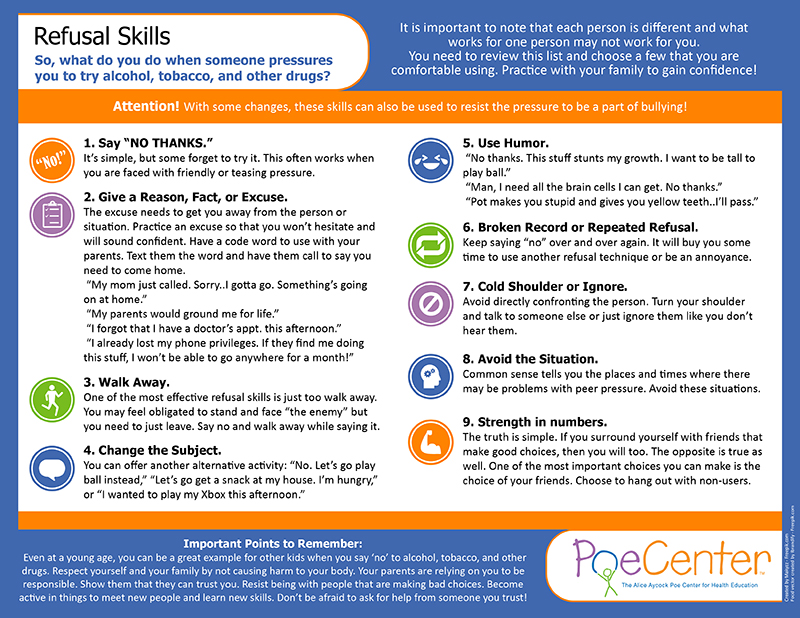
Effects and Prevention of Underage Drinking
Jessica Jones – CSAC, LCAS-A
Underage drinking is a real concern for parents of adolescents as exposure to underage drinking may start as early as middle school, and for a small percentage, elementary school too. Since 1975 The Monitoring the Future Study has measured adolescent substance use trends in 6th, 8th, and 12th grades. While overall binge drinking rates are significantly lower than the peak in 1997 (16.6% of 12th graders today compared to 31.5% in 1997), binge drinking still remains a concern as underage drinking is linked with other negative health outcomes such as intimate partner violence and injury.
The 2017 survey revealed that underage drinking mostly involved binge drinking of five or more drinks in a row. Binge drinking rates steadily increase as adolescents get older: 3.7% of eighth graders, 9.8% of 10th graders, and 16.6% of 12th graders binge drink (Monitoring the Future 2017). Additionally, the opioid crisis has sparked new concerns about underage drinking. Nationally one out of eight high school seniors reported misusing opioids, and seven out of ten have combined opioids with at least one other substance (“Teens Mix”, 2013). Teens primarily mix opioids and marijuana (58.5%) with alcohol being a close second at 52.1%. Teens who have mixed opioids with other drugs are four times as likely to report frequently getting drunk (“Teens Mix”, 2013).
Frequent binge drinking increases the risk of accidents and violence, as underage drinking places youth at a higher risk of suicide, homicide, alcohol poisoning, sexual assault, and traffic accidents. Alcohol use, especially binge drinking, negatively impacts adolescent brain development and increases the risk of alcohol dependence later in life. Persons who begin drinking in their teens have a higher risk of developing substance use disorder when compared to those who begin drinking at 21 or later. Delaying onset of first use is critical to minimizing the risks of developing substance use disorder. (“Underage Drinking”, 2017). The video Under Construction: Alcohol and the Teenage Brain explains the effects of alcohol on the development of the teenage brain.
Understanding the motivations that prompt adolescents to binge drink will inform prevention efforts. Aside from individual differences, several common factors play a role in the initiation of underage drinking: accessibility of alcohol, peer influence, perceptions of drinking as a common teen experience, or masking an underlying mental health issue. Teens might also be influenced by the glorification of substance use in music, movies, and television. Substance use might also provide an escape from stress or an outlet to release life’s frustrations. Adolescents who struggle with being alone, staying busy, or satisfying the need for excitement might use alcohol to assuage those needs. Also, alcohol may provide a common ground to interact with other peers. Still, others might be attracted to the instant physical gratification that alcohol provides and short-term confidence to interact socially (“Top 8 reasons”, 2017).
According to the National Institute of Alcohol Abuse and Alcoholism parents can do the following to help prevent alcohol use at an early age:
- Talk about the dangers of drinking.
- Model positive behaviors. If you drink alcohol, drink responsibly.
- Serve as a positive role model in general.
- Do not make alcohol readily available in the home.
- Get to know your child’s friends.
- Get involved and have regular conversations with your child about life in general and what is going on with them.
- Get connected with other parents about sending a clear message about not drinking.
- Supervise parties to make sure alcohol is not involved.
- Encourage your children to participate in healthy and fun activities.
Research shows that teens are less likely to drink when their parents are actively involved in their lives (“Underage Drinking”, 2017). Parents should never forget the important role they serve in their child’s life. However, the parenting role often becomes challenging as a child reaches adolescence and prepares to transition into adulthood. Adolescents need to feel a sense of autonomy and independence. A teen’s transition into adulthood is made smoother by avoiding the use of substances. When parents openly and respectfully communicate boundaries and expectations, parents influence their adolescents’ decisions to avoid or delay alcohol use, a decision that has life-long advantages.
References
For the Classroom: Refusal Skills
Grades: 6-12
Objective: Demonstrating how to use refusal skills
Featured Poe Program: Drugs Uncovered: What Parents Need to Know
Interested in bringing this topic to your school or organization? The Poe Center offers substance use prevention programs for 3rd – 12th grades and adults. Call 919-231-4006 or go online to schedule a program.
Grade Level: Adults Only
Program Length: 2 hours
Drugs Uncovered: What Parents Need to Know is an interactive program that targets parents of upper elementary, middle school, and high school students. Drugs Uncovered introduces parents to the current trends regarding alcohol, tobacco, and other drugs; health risks associated with adolescent use/abuse; the North Carolina alcohol laws and parental responsibility; and techniques for open communication and dialog with adolescents.



